#albicant
Text
German couple masturbating together on Webcam
Ball Busting Masturbation
Collegegirl
Busty blonde dp fucked in a desert
Strapon Femdom PMV Porn Music Video HOT
You will love the taste of my shemale cock
Mis ricas tetas boob flash
Emo cute boy gay porns and hot naked boys having sex first time
Presley Dawson love to suck and ride on big dick
Beautiful gay sex boy australia When bored teen twinks get together,
#race-horse#Aubin#Youngran#suck-bottle#Trachearia#Piarroan#Soudanese#malcultivation#tropism#egged#albicant#Munch#priest-baiting#hurlbat#adipsia#Cripps#darnix#Kainah#Nimrodize#Deephaven
0 notes
Text

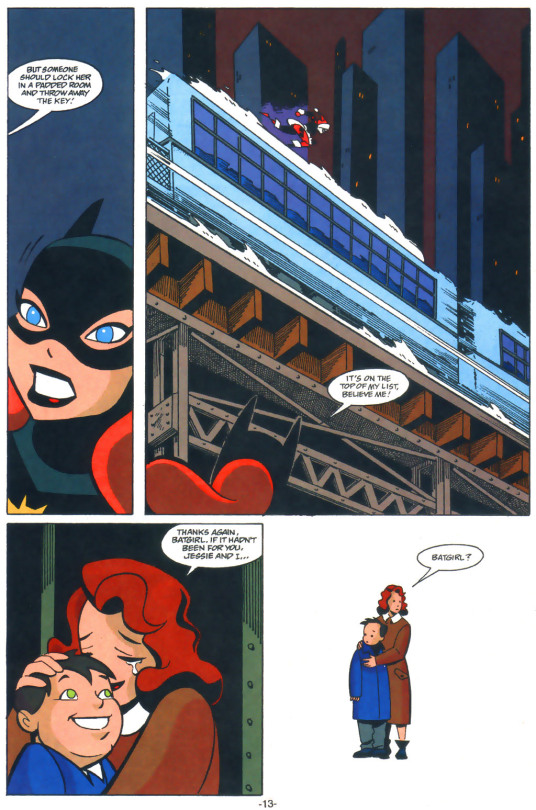
Batgirl Adventures
by Paul Dini; Rick Burchett;Rick Taylor and Albic DeGuzman
DC
#dc comics#batgirl adventures#batgirl#harley quinn#rick taylor#albic deguzman#rick burchett#paul dini
5 notes
·
View notes
Text
at long last, the first chapter of Mhapare Protectors: A Lightning Bolt in Clear Skies has been completed!
click read more to see it for yourself
A faint breeze runs over my skin, bending the long grass of the clearing ever so slightly as it passes. Leaves shift in its current, and I hear the faint rustle of their small movements. A little brown bird hops onto a twig and pecks at the ground. I do not look at it; I am still watching the den.
Nearly an hour has passed since the creature was supposed to come out. The sun has been peering into the den with me for more than that. It had definitely gone in- the marks outside told me as much -but after that, anything could have happened. Perhaps it wasn’t as healthy as its tracks suggested, and it had died inside. Maybe there was another exit to the den, and it had left by there. Could it have already left by the way I’m watching, without leaving any sign of having done so?
As I prepare myself to get up and return empty-handed, I see a long nose poke out of the den. It sniffs the air, and moves a little further out. Go on, just a little more. A little more and this will all be worth it.
As if compelled by my thoughts, the rest of the head slowly leaves the safety of its home. Its dark eyes take in the surroundings, and then it’s lying on the ground, a deep red splotch growing on the fur on its neck and the bare dirt below.
Carefully, I bring myself upright. I ignore my complaining body as I walk over to the fallen creature, checking it over. Very large, lots of muscle. Quite a bit of fat, too. This one clearly fed well, and often. Its potential prey would certainly thank me, if they could comprehend such things. We will get a lot out of this one.
I call out for Tsnya Gvunktsyo, and wait for her to come crashing through the forest. I do not have to wait long. She slings the creature over her shoulders with one solid motion and secures it to her vest, bending down for me to climb onto her back.
“Maha’s in a good mood,” she says in her merry, rolling voice as we plod back to camp. “She went down to the river earlier with Bibi and Bava Mard’ha. Caught some fish. No big ones, but she’s proud of them anyway. Pretend to be impressed.”
“I know. I’ll try.” Maha Pikolyan isn’t very good at fishing, but no-one tells her that if they don’t want last portions at dinner.
We spend some short minutes chatting as we walk, Gvu’s rocking gait providing us with a steady, relaxed rhythm. Soon we come to the edge of the forest, where the wild trees abruptly stop and give way to hedges and tilled soil. Our camp is by the rough road across the fields. I can just see its shape from where we are.
Maha Pikolyan is indeed in a good mood when we arrive. She’s showing her small fish to Bava Yaikspli and Bava Erd’hunr. I’m almost convinced by their performance of awe at her meagre catch. They notice our arrival before her, and wave dramatically. Maha Pikolyan turns to see us.
“Ah, Pesyu Gvunktsyo!” she calls out with a broad smile, “what have you caught for us today?”
“Dyardmha Ohkon shot a… well, a this. It’s a big one, anyway. Plenty to go around.” Gvu calls back, bending down for me to get off before we enter the camp. She hands me my sticks so I can follow her, and runs to show her the creature.
“So this is what he’s spent his morning doing.” Pikolyan’s tone grows more sour. “I suppose it’s worth all that time… but did he really have to drag you out there too?”
“Maha, not again. Ohkon needs me to carry his prey back. He’s not strong enough to drag it back himself.” She gestures vaguely at my body to illustrate her point.
“Then he should just fetch you when he needs you instead of having you waste your time waiting for him for hours just to kill one animal. We need you helping out back here, not standing around in some forest.”
“I need to be close enough to hear him when he calls for me. He can’t walk all the way back to camp to fetch me, his legs-“
“I’ve heard enough about his legs!” Pikolyan snaps. “So what if they’re not as good as the rest of ours? He just needs to make more of an effort. He’s just using them as an excuse. I bet he can walk from here all the way to the capital on his own if he weren’t so lazy and selfish.”
“How can you say that about someone who just spent hours getting you this?” Gvu thrusts the creature towards her. “Can anyone else do this?”
“I don’t want to bring such a pleasant day down with this nonsense. This conversation is over, Pesyu. Move along.”
“But Maha-“
“Move. Along. I need to cook these fish I caught, and I’d rather not argue about your pet while I’m doing that.”
Bava Yaikspli puts a strong hand on Gvu’s shoulder. “Listen to your Maha, Pesyu. Here, let me take a look at that.” Gvu lays the creature down for him to examine. He traces a few outlines on its body with his knife, and nods. “This will do very nicely, Pesyu. Good work.” He pauses, and turns to me. “Uh, you too, Vhaya. You… have an exceptional talent.”
We leave him to do his work and continue into the camp, passing Bava Mard’ha listening patiently to a rambling story that Bibi is enthusiastically babbling at him as we approach our tent. Suddenly, a yell erupts from by the road. Gvu rushes back to see what the commotion is, with me stumbling behind. A column of soldiers and knights are marching up the road, led by a tall, slightly unnatural-looking woman with long grey hair and strangely colourful armour- the boots are gleaming white, dull black stone, and dark wood, but the rest is a shining pattern of blues at the shins turning to dazzling orange and red as it reaches the high collar and elbow-length sleeves. Below the elbow her skin is bare, but patterned with bright tattoos. Her large, sparking eyes fall on me.
As I try to shield myself with my cloak, the woman barks an order to the column, and the sound of marching stops. I can feel the stares the soldiers give me, seeing my scarred arms and twisted legs, my shaking form supported by my sticks. Gvu lays a hand on my arm. I look up; the woman is standing before me, flanked by two uncertain knights. She bends down to level her face with mine.
“Do you speak Rumhapa?” she asks slowly in a rumbling, crackly voice. I nod. When my physical weakness became apparent to Pikolyan, she tried to get me into learning instead. Rumhapa was one of the few things that I was able to grasp.
Another question, faster and in Rumhapa this time. “Will you show me your scars?” Reluctantly, I begin rolling up my trousers to show her the more dramatic ones on my legs. If she wishes to entertain herself with my deformities, I had as well make myself useful and provide her with the most shocking. “Not those“, she says. “Show me your arms.” Surprised but relieved, I replace my trouser legs and push back my sleeves. She probes the mess of cuts and burns marking them, every so often looking at the intricate patterns on her own arms. After a few uncomfortable minutes of this investigation, she stands up straight- her full height towering over everyone -and nods towards one of the knights. They come forwards and put a hand on my shoulder. Gvu shoots a dark look at them, but doesn’t interfere. The knight pauses for a moment.
“Who leads this camp?” they say at last, with a sharp, quiet voice that snaps the growing silence like a twig. We point at Pikolyan. The knight marches towards her and begins to discuss some matter with her in hushed voices. They come to a conclusion; the knight gives a small bow and walks back to me.
“You will come with us to the capital. In return, we will provide your camp with a security detail to escort them to the nearest refugee sanctuary.” They hold out a hand, as if expecting me to come with them. I stare at it, stunned.
“Do you understand?” Of course I don’t. None of this makes any sense. My confusion is clearly visible to them, since then they kneel down to try again. “The Flame Protector”- they gesture to the tall woman -“has decided that she will be taking you with her to the capital. Your leader has consented to this on the condition that we provide her with a security detail to escort them to the nearest refugee sanctuary. Feel free to say any goodbyes necessary. We will be departing soon.”
“I’m leaving the camp?”
“Correct.”
“Can anyone come with me?”
“Your leader specifically forbade you from bringing anyone else. This was also part of our deal.”
Gvu steps forward. “If you’re taking Ohkon away from me you better have a damn good reason for it.”
“I don’t have to justify myself to you, pokyi. The deal’s been made. He’s coming with us, so stand down or you won’t be standing up ever again.” The knight seizes my arm painfully and drags me to the Flame Protector. She looks down at me, lamplike grey eyes sparking with glints of orange.
“It’s a long way to the capital. If you prefer, you may join the other wounded in the medical carriage. There will be enough space for you.”
“I’m not going.”
“Oh? Why is that?”
“I want to stay with my Tsnya. If she’s not coming, then neither am I.”
“Tsnya?”
“Gvunktsyo” I point at her. “She’s my friend. I want her to come with me.”
“I’m afraid that’s not going to happen. Your leader made it very clear that she would not permit us to take anyone useful from her for any price.”
“So what? Why do you care what she says? She can’t stop you!” Why won’t they let us stay with each other?
The Protector sighs heavily and bends down. Suddenly I am held in the air by my collar, brought up to her stern face. She narrows her too-large eyes.
“Look, pokyi. I don’t know how you do things where you come from, but in Damhapa we don’t just take whatever we want because the person we’re taking from can’t stop us. A deal is a deal. Your leader gave you to us, and I don’t think she’ll be wanting you back. This is too important for us to let you have a say in it. You’re coming to the capital. Your friend is not. Now, I’m running out of patience for you, so if you don’t want to be injured even more you will go to the medical carriage and shut up. Do you understand?”
I don’t quite, but I nod anyway. Her grip loosens slightly, and she gently lowers me to the ground with a satisfied smile. Stumbling as I find my footing, I am directed by a different knight to the medical carriage. A space is found for me between two wounded soldiers. Before I can call out to Gvu, the procession pulls away, and my yells are buried in the sounds of movement.
—
feedback will be greatly appreciated! please feel free to give any and all criticism and questions you have, no matter how small
1 note
·
View note
Text
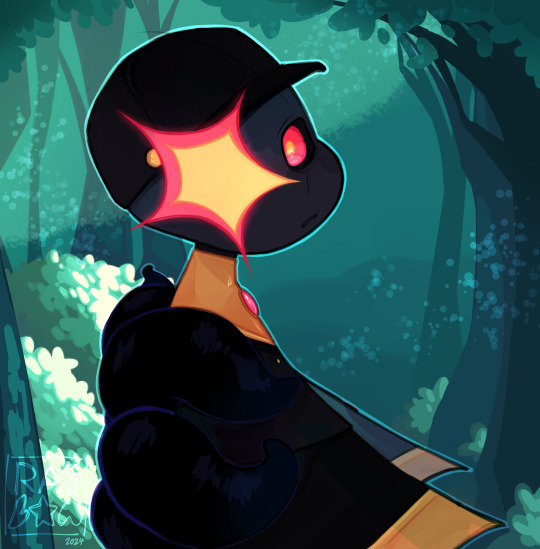
He is such a silly :3 I WANNA SQUEEZE HIM !!!
(click for better quality)
Kip belongs to @/albically on instagram + tiktok
(trying out a kinda new rendering style??? Idk really)
#undertale au#undertale#sans#sans undertale#idk#art#utmv#au#sans au#raibowart#kip#kip sans#kipsans#silly
58 notes
·
View notes
Text
Now in my ko-fi shop— Albicant Sepulcher of Extinction Style for Exalted: Essence, a conversion of that wicked fucking cool Sidereal martial art we saw in the Abyssals: Sworn to the Grave preview!
This is a powerful martial art style with seven Charms and all-new Sidereal modes. Albicant Sepulcher of Extinction Style is for Abyssal, Getimian, Infernal, Sidereal, and Solar Exalts of Essence 2+, favors reaching weapons such as staves and scythes, and focuses on the Complimentary Abilities of Integrity, Performance, and Presence. The style's grim techniques focus on breaking the enemy's will to live before breaking their body, eroding their Intimacies, and hindering them with their own worldly attachments.
Available as a pay-what-you-want PDF. Become the b̶l̷e̸a̵k̴ ̸s̸a̶i̴n̴t̴ you were born to be! Preach the gospel of death and guide your enemies through despair and into oblivion!
(This was requested and sponsored by a generous backer, Nicholas M. Gravina. If you've got an idea for something you'd like me to cook up for Essence, send me a request through my ko-fi!)
13 notes
·
View notes
Text
Quiz Questions
excerpt in translation from 1930 book Prove your Knowledge!, a part of the series Games for Sorties and Excourses.
6. Savino y Just, Marchis a Jerusalem primer (ayent grad noblessem calscon refusað) sta, paravant a sell'accession d'an 1119, un sodal ny famigl regnant a cal stat?
6. Savino the Just, first Marksman of Jerusalem (having declined any higher title) was, prior to his accession in 1119, part of the ruling family of which state?
7. Y ci cont a pouvr anglesc dy Duc Saðour e sy Band Masquað se produgn cos general durant y regn de cal emperour drengoçan?
7. The English folk tales of the Farmer Duke and his Masked Band are usually set during the reign of which Drengotian emperor?
8. Cal fey Nicolà s Avignon d'an 1347 stant rumorað com un rout vars y sfondranç final dell'Empir Roman Dovem?
8. What did Nicolà s Avignon do in 1347 that is said to have led to the final collapse of the Second Roman Empire?
9. Un querel sur y postion dy Caðer ne Pieðr Roug entr cal dou stat albic akirtau y Rix cas Fieltað ci dezein parmanent?
9. A dispute over the location of the Redstone Chair between which two Albick states sparked the decades-long Wars of Fealty?
10. Cu sta y preu domn stant instroyour an universtað european, d'an 1219 com sodal nell'Universtað Sant'Antonnio a Padou?
10. Who was the first woman to teach at a European university, in 1219 as part of the Sant'Antonnio University of Padow?
7 notes
·
View notes
Photo


My third illustration of a “Schwarzer Reiter” that I have officially designed for “Hohenrotbart,” the ruling, dynastic house of “Das Königreich Middenland” in my low-fantasy world. Both this illustration and it’s associated “faction iconography” were officially designed for a low-fantasy setting of my original conception with technology and material culture roughly equivalent to European History during the compounded advents of The Italian Renaissance, The Protestant Reformation, and The Discovery of America. Where formations of heavily armoured and mounted knights in either suits of full plate armour or heavy coats of chainmail fight alongside professional armies of pikemen and matchlock musketeers. Where medieval-style stone castles are gradually being outsourced in favour of both lavish country estates and devoted military fortifications, or “bastions,” due to the technological advancements being made in gunpowder-based, siege artillery. And where fledgling nation-states in the form of kingdoms and empires look beyond the great oceans and the frontiers of “The Known World” in search of exotic riches and virgin lands.
In context to the canon lore of my low-fantasy world, “Hohenrotbart” or “House Rotbart” is the newly established ruling dynasty over “Das Königreich Middenland” or “The Kingdom of Middenland.” A fantasy kingdom loosely inspired by Medieval and Renaissance Prussia under the theocracy of The Teutonic Knights, as well as 16th and 17th century “Ducal Prussia” after the official dissolution of The Monastic State of The Teutonic Knights in East Prussia. “Die Schwarze Reiter” as the elite, pseudo-monastic, martial fraternities of aristocratic and noble heavy cavalry paying direct homage and military service to the persons of “Die Könige von Middenland” as both the traditional and the hereditary holders of the office of “Der Hochmeister Der Schwarze Reiter” or “The Supreme Grandmaster of All Schwarze Reiter” being highly analogous to the constituent chapters of The Teutonic Knights during The European Middle Ages and The Renaissance. While the official legislation formally decreed by Friedrich I as “Der erster und herrschend König von Middenland” and “Der Gründungschef von Hohenrotbart“ to convert to “The Luxembourgian Reforms” on behalf of his dynastic house and his hereditary subjects being roughly analogous to the secularization of “The Monastic State of The Teutonic Knights” or “Der Deutschordenstaat” into the Lutheran, East Prussian Duchy during the early 16th century.
Alongside “Hohenbiermann Der Markgrafschaft Branndenborg,” “Hohenrotbart Des Königreich Middenland” collectively form “Die Sudkreuzritterstaaten,” “Die Teutogenstaaten,” or “Die Sudentscheidenstaaten.” Essentially a “Teutogen” or “Southern Austere” cultural and linguistic bloc born of the complimentary and subsequent events of “The Southern Crusades” and “The Sudsiedlung.” “The Southern Crusades” being the religious warfare and the territorial acquisitions officially preached and prosecuted against the apostate, Albic tribes religiously subscribed to the druidic, cult worship of “Erdøk“ or “The Great Forest” geographically located beyond the eastern frontiers of The Empire of Mankind Proper. While “The Sudsiedlung” denotes the gradual and effective resettlement of culturally and ethnically “Austere” or “Northern Imperial” settlers and immigrants to “Die Sudkreuzritterstaaten” alongside the synonymous, systematic, and complimentary mass conversion efforts and the cultural assimilation of the indigenous “Albic” tribes religiously subscribed to the druidic, cult worship of “Erdøk.” The appeal for the druidic, cult worship of “Erdøk“ or “The Great Forest” already gaining momentum amongst the Albic tribes indigenous to The Former Kingdom of The Midlands long before it’s final collapse beginning with the untimely extinction of the legitimate, male bloodline of The Late House Bartholemnew and the consequent warring and political feuding between the princely, “great houses” of aristocratic and noble princeps and magnates over the issue of legitimate succession to The Late House Bartholemew for the hereditary title of “King of The Midlands.” “Das Königreich Middenland,“ in particular, is the consequential product of “The Midlands Crusade” formally and officially preached and prosecuted against the apostate, Albic tribes geographically located beyond the southernmost frontier of “Das Selbst Kaiserreich der Menscheit.” With Friedrich-Albrecht von Rotbart as Bishop-Prince of Elchingen and one of the three ecclesiastical, invested “Kurfürsten Des Selbst Kaiserreich der Menscheit“ officially serving as “Archpatriarchal Legate,” or the pontifical representative to the person of Archpatriarch Vexillarius IV as “The 299th and Reigning Bishop of Romulus” and “The Current Head of The Conservative Church of The New Gods” for this second “Southern Crusade” officially preached and prosecuted against the apostate, Albic tribes indigenous to The Former Kingdom of The Midlands.
Before his formal coronation and anointment as “Der erster und herrschend König von Middenland” and “Der Gründungschef von Hohenrotbart.” Friedrich Von Rotbart was originally a mercenary captain of minor aristocratic stock to a company of professional pike-and-shotte infantry known as “Die Bande Des Falke” of “The Band of The Hawk” operating within both “The Austere” and “The Frivolous” cultural and linguistic hemispheres of The Empire of Mankind Secundus. Friedrich Von Rotbart as a mercenary captain to pike-and-shotte infantry would have been content to ply his trade of professional soldiery in service to Das Selbst Kaiserreich der Menscheit’s great houses of aristocratic and noble “Imperial Princeps” or “Imperial Magnates” were it not for his fraternal connections to his far more prolific, prestigious, and illustrious older brother: Friedrich-Albrecht Von Rotbart, Bishop-Prince of Elchingen, ecclesiastical, invested “Kurfürst Des Selbst Kaiserreich der Menscheit,” and above all “Archpatriarchal Legate to Vexillarius IV for The Midlands Crusade.” In return for the once-in-a-millennium opportunity to be formally crowned and anointed the first monarch of his own sovereign state and the founding head of his own royal household, Friedrich Von Rotbart and his “Bande Des Falke” flocked to the rallying cry of this new “Midlands Crusade” formally preached and prosecuted by his far more prestigious, prolific, and illustrious older brother as the pontifical representative to the person of Archpatriarch Vexillarius IV as “The 299th and Reigning Bishop of Romulus” and “The Current Head of The Conservative Church of The New Gods.” Although having allegedly fought with such distinction and meritorious service so as to earn both the respect and the commendation of the leading aristocratic and noble princeps and magnates as well as the sanctioned church authorities officially involved in The Midlands Crusade. Friedrich Von Rotbart and his “Bande Des Falke” fought only as minor belligerents involved in this campaign of religious warfare and territorial conquest aimed at the systematic, mass conversion of the apostate, Albic tribes religiously subscribed to the druidic, cult worship of “Erdøk.”
With The Midlands Crusade concluding in both stunning and overwhelming triumph for the crusaders at the climactic “Battle of The Godswoods.” “The Godswoods” as the holiest shrine and sacred grove to the apostate, Erdøki cultists indigenous to The Former Kingdom of The Midlands was subsequently desecrated and demolished by the conquering, crusading knights of The Midlands Crusade. With it’s constituent lands being officially consecrated as the official site of construction for the new basilica town of Marienburg, where Friedrich-Albrecht von Rotbart would be both formally and officially invested with the awesome and prestigious ecclesiastical office of “Bishop-Patriarch of Marienburg,” with The Bishop of Romulus explicit blessing, in order to facilitate the systematic, mass conversion of the apostate, Albic tribes back into the fold of The Conservative Church of The New Gods. Through sheer virtue of his fraternal ties to both the pontifical representative to the person of Archpatriarch Vexillarius IV for The Midlands Crusade and The Seminal Bishop-Patriarch of Marienburg, Friedrich Von Rotbart was naturally prioritized over all other prospective candidates for the formal and official coronation and anointment as the first secular, worldly monarch for the new “Königreich Middenland” or “The Kingdom of Middenland” as well as “Der Gründungschef von Hohenrotbart” or “The Founding Head of House Rotbart” as the region’s first reigning, dynastic household and hereditary monarch since the untimely extinction of the legitimate, male bloodline of “The Late House Bartholemew” well over a century and a half ago. By sheer virtue of the awesome power, prestige, and authority invested within the ecclesiastical office of Bishop-Patriarch of Marienburg, Friedrich-Albrecht Von Rotbart would use his power, authority, and influence within The Conservative Church of The New Gods to leverage the unanimous religious and political support of the high ranking offices of both the ecclesiastical and the monastic clergy in Das Königreich Middenland for the coronation and the anointment of his younger brother as “Friedrich I, Der erster und herrschend König von Middeland und Der Gründungschef von Hohenrotbart.” Friedrich I’s formal coronation and anointment as “The First and Reigning King of Middenland” and “The Founding Head of House Rotbart,” however, was initially received with both icy anticipation and subtle dread by the newly established princely, “great houses” of “junker” aristocracy and nobility that had formed from the cream, core, and bulk of the conquering, crusading knights of The Midlands Crusade originally preached and prosecuted by Friedrich-Albrecht Von Rotbart as Archpatriarchal Legate to the person of Vexillarius IV as “The 299th and Reigning Bishop of Romulus” and “The Current Head of The Conservative Church of The New Gods.” Friedrich I’s formal coronation and anointment as “Der erster und herrschend König von Middenland” and “Der Gründungschef von Hohenrotbart” was originally judged and disputed with suspicion and skepticism, in equal measure, by the feudal princeps and magnates of “junker” aristocracy and nobility due to his minor aristocratic birth within the “Austere” or “Northern Imperial” cultural and linguistic hemisphere, as well as his professional background as a mercenary captain to pike-and-shotte infantry, as opposed to aristocratic and noble heavy cavalry as the traditionally most prestigious form of military service due to the historical precedence of the militaristic ideology of professional chivalry. With both the formal blessing and the expressed recommendation of Friedrich-Albrecht Von Rotbart as his far more prestigious, prolific, and illustrious older brother and The First Bishop-Patriarch of Marienburg. Friedrich I as “Der erster und herrschend König von Middenland” and “Der Gründungschef von Hohenrotbart” had officially awarded hereditary, dynastic enfeoffment to Das Königreich Middenland’s newly established princely, “great houses” of “junker” aristocrats and nobles the most arable lands, titles, and estates that had not been previously and officially claimed as the legal property of The Conservative Church of The New Gods. Much later into his long, prolific, and illustrious reign, Friedrich I as “Der erster und herrschend König von Middenland” and “Der Gründungschef von Hohenrotbart” would officially decree state legislation to grant both the greater and lesser dynastic houses of “junker” aristocracy and nobility the exclusive, feudal privilege over official appointments as judges and magistrates for the new, secular, provincial, “royal” law courts officially established by Friedrich I shortly after his formal coronation and anointment as “Der erster und herrschend König von Middenland.” The voluminous bodies of secular law codes, customs, and traditions applied to the provincial jurisdiction of the secular, “royal” law courts of the new “Königreich Middenland” essentially being derivative works based on the old town laws of “Die Freie Reichsstädte” or “The Imperial Free Cities” within the “Austere” or “Northern Imperial” cultural and linguistic hemisphere of Das Selbst Kaiserreich Der Menscheit. With the exception of the provincial jurisdiction of the episcopal diocese of The Archbishopric of Marienburg, which fell directly under the ecclesiastical jurisdiction the canon law courts of The Conservative Church of The New Gods officially seated within The Holy Sept of Romulus as the historic kernel, capital, and namesake of The Cosmopolitan, Classical Romulan Republic and “The Empire of Mankind Primus.”
In direct cooperation with his far more prestigious, prolific, and illustrious older brother Friedrich-Albrecht Von Rotbart as “The First Bishop-Patriarch of Marienburg.” Friedrich I as “Der erster und herrschend König von Middenland” and “Der Gründungschef von Hohenrotbart” worked in joint partnership with both the ecclesiastical and the monastic clergy of The Conservative Church of The New Gods over the rulership, the state administration, and the systematic, mass conversion of the autochthonous Albic tribes religiously subscribed to the druidic, cult worship of Erdøk. Through the spiritual, cultural, and moral authority of a culturally “Austere” or “Northern Imperial” Conservative clergy with their monopoly on knowledge, education, and learning in general. The systematic, mass conversion of the apostate, Albic tribes of Das Königreich Middenland came synonymously with their thorough assimilation into the “Austere” or “Northern Imperial” culture and language using the church schools and the religious services officially sponsored by a culturally and ethnically “Austere” or “Northern Imperial” Conservative clergy. With any indigenous Albic tribes who had both openly and violently protested against the legislative marginalization of their religious liberties in order to encourage their systematic, mass conversion back into the fold of The Conservative Church of The New Gods facing mass genocide at the hands of either the fledgling, yet powerful professional army of “Hohenrotbart Des Königreich Middenland,” or the feudal, aristocratic levies of knightly retinues or pike-and-shotte infantry regiments paying direct homage and military service to the great houses of junker princeps and magnates. In addition to the systematic, mass conversion and the thorough cultural assimilation of the apostate, Albic tribes religiously subscribed to the druidic, cult worship of “Erdøk” or “The Great Forest.” Friedrich I’s single, most defining, and most enduring policy as “Der erster und herrschend König von Middenland” and “Der Gründungschef von Hohenrotbart” is actively encouraging the mass migration and the thorough and effective resettlement of settlers and immigrants hailing from his native “Austere” or “Northern Imperial” cultural and linguistic hemisphere within The Empire of Mankind Proper. Using the allure and the promise of the opportunity to resettle and start a new life, in free hold, within the newly established castles and fortified cities of Das Königreich Middeland, as well as the most arable lands and estates within their attached countryside. Friedrich I intends to “bolster” or otherwise “revitalize” growth within the local economy, industrial base, and the cultural and scholastic activity of his new “Königreich Middenland” by attracting skilled, moneyed, and educated commoners to permanently resettle into his newly established castles and fortified cities as “burghers” or bourgeoisie, merchants, artisans, and professionals, as well as the most lucrative and arable lands and estates within their attached countryside as “kollmers” or country gentlemen. In order to ease the cultural and religious friction between the equally dramatic and significant influx of “Austere” or “Northern Imperial” settlers and immigrants with the Albic natives. Friedrich I, in direct partnership with the ecclesiastical clergy of The Conservative Church of The New Gods in Middenland, has actively pursued a church and state-mandated policy of encouraging the intermarriage between male settlers and immigrants hailing from the “Austere” or “Northern Imperial” cultural and linguistic hemisphere of The Empire of Mankind Secundus with the daughters of Albic families who had officially converted back into the fold of The Conservative Church of The New Gods. By granting church dowries officially sponsored by the ecclesiastical clergy of The Conservative Church of The New Gods in Das Königreich Middenland to Albic families who had both openly and formally converted back into the fold of The Conservative Faith, Friedrich I hopes to simultaneously stimulate the systematic, mass conversion of the apostate, Albic tribes back into the fold of The Conservative Church of The New Gods, while also easing the societal friction agitated by the cultural and religious differences between the “Austere” or “Northern Imperial” settlers and immigrants with the Albic natives.
Despite it’s reputation as the newest, poorest, and least developed sovereign state within the geographic boundaries of “The Civilized World” as officially defined and prescribed by the ecclesiastical and monastic clergy of The Conservative Church of The New Gods, as well as the nonconformist preachers of the multitude, or the plethora of “Reformed” and “Dissenter” churches of The New Gods derived from the theological reforms of Karl von Luxembourg and Cassyon Dufresne, respectively. “Hohenrotbart Des Königreich Middenland” possesses the single largest, most disciplined, most skilled, and most professional armies of pike-and-shotte infantry south of Margrabia Mazowsza under Rod Danielewski. Immediately descended from the military traditions of the conquering, crusading host of The Midlands Crusade formally preached and prosecuted under the ecclesiastical leadership of Bishop-Prince Friedrich-Albrecht von Rotbart as “Archpatriarchal Legate,” or the pontifical representative to the person of Archpatriarch Vexillarius IV for The Midlands Crusade. The professional regiments of pike-and-shotte infantry paying direct homage and military service to Hohenrotbart Des Königreich Middenland are some of the most feared and respected composite units of pikemen and matchlock musketeers to define the current epoch of post-chivalric warfare. Der König von Middenland’s professional regiments of pike-and-shotte infantry are notorious for their steely discipline in holding the line in pitched battles against other composite units of pike-and-shotte infantry and in the face of nigh-irresistible cavalry charges, their superb quality of military fitness and skill-at-arms, and their exceptional degree of military professionalism by contrast to the feudal, aristocratic levies and mercenary contractors more popular elsewhere within “The Civilized World.” This culture of military excellence and professionalism directly inherited from the conquering, crusading host of “The Midlands Crusade” have merely been “bolstered,” or otherwise “reinforced” by the personal and direct supervision of Friedrich I, whose world beating pike-and-shotte infantry regiments have only benefited from his hard-earned, empirical knowledge and worldly experience as a mercenary captain to pike-and-shotte infantry operating within the “Austere” and “Frivolous” states of “Das Selbst Kaiserreich Der Menscheit” before his expressed involvement in The Midlands Crusade at the expressed invitation of his older brother.
Although born out of his inherent distrust for the newly established great houses of “junker” princeps and magnates that had formed from the cream, core, and bulk of the conquering, crusading knights originally involved in The Midlands Crusade. “Die Schwarze Reiter” as the elite, pseudo-monastic, aristocratic and noble heavy cavalry paying direct homage and military service to “Hohenrotbart Des Königreich Middenland” as both the traditional and the hereditary holders of the office of “Der Hochmeister Der Schwarze Reiter” or “The Supreme Grandmaster of All Schwarze Reiter” likewise parallel the world-beating military professionalism, discipline, physical fitness, and skill-at-arms of Das Königreich Middenland’s prized regiments of pike-and-shotte infantry. Organized into elite, pseudo-monastic “chapters” or “martial fraternities” known as “Brüderschaften” or “Brotherhoods” each housed and headquartered within a local “chapter house” corresponding within a network of recruiting districts known as “cantons.” And placed under the personal command and the direct supervision of “Ein Großmeister” or “a Grandmaster” personally and directly appointed for life from “legitimate issues” or “dynastic scions” of Das Königreich Middenland’s great houses of “junker” princeps and magnates by the persons of “Die Könige von Middenland” themselves. “Die Schwarze Reiter” as the elite, pseudo-monastic, aristocratic and noble heavy cavalry paying direct homage and military service to “Hohenrotbart Des Königreich Middenland” as both the traditional and the hereditary “Hochmeister Der Schwarze Reiter” or “Supreme Grandmasters of All Schwarze Reiter” were either compelled through the obligatory, feudal, aristocratic “blood tithe,” or otherwise willingly enrolled into the local chapter houses of their respective “Brüderschaft” to serve the royal, state interests of “Die Könige von Middenland” over the feudal, private interests of their aristocratic and noble households. To physically distinguish the constituent “Brüderschaften” of “Die Schwarze Reiter” from the domestic, household knights paying direct homage and military service to Das Königreich Middenland’s newly established great houses of “junker” princeps and magnates. “Die Schwarze Reiter” were issued their signature, black armour further embellished with skull fetishes, gilded plates, and “burned” chainmail to distinguish their rank, seniority, and specific “Brudershaft” while wearing surcoats and cuirasses richly emblazoned or enameled with the escutcheon of “Hohenrotbart” as the founding, ruling, dynastic household of “Das Königreich Middenland.” In order to both preserve and retain the professional loyalties and the direct homage of the various “Brüderschaften” of “Die Schwarze Reiter” to the persons of “Die Könige von Middenland.” Both the personal livelihoods and the upkeep costs of “Die Schwarze Reiter” were funded through a combination of the quarterly income tax generated by Das Königreich Middenland’s “royal demesne” or “crownlands,” by tariffs officially imposed on the trade, commerce, and industry of Der König von Middenland’s charter companies and the local trade guilds, as well as tithes and benefices generated by the religious services of, donations to, and the property owned by The Conservative Church of The New Gods in joint partnership with “Hohenrotbart Des Königreich Middenland” over the rulership, the state administration, and the systematic, mass conversion of the apostate, Albic tribes autochthonous to “Das Königreich Middenland.” Each “Großmeister” was personally and individually charged for life directly by the persons of “Die Könige von Middenland” with the personal command and the direct supervision of “Die Brüderschaften” of “Die Schwarze Reiter,” and could be immediately and unceremoniously stripped of their rank and office should they show any signs of insubordination to the person of “Der König von Middenland” or those of his official, state-sanctioned representatives. All “Schwarze Reiter” from the youngest and rawest of squires to the most venerable and seasoned “Großmeister” were legally obligated to forfeit any lands, titles, and estates within their legal possession at the secular, provincial, “royal” law courts of “Die Könige von Middenland” upon and regardless of their obligatory or voluntary enrollment into the local chapter houses of their respective “Brüderschaft.” Through compelling the second sons of Das Königreich Middenland’s junker aristocrats and nobles, as well as the firstborn sons of poorer junkers into elite, pseudo-monastic, and professional military service as “Schwarze Reiter” through the obligatory, feudal, aristocratic “blood tithe.” Friedrich I as “Der erster und herrschend König von Middenland,” “Der Gründungschef von Hohenrotbart,” and “Der erster Hochmeister Der Schwarze Reiter” hopes to better “entrench” or otherwise “reinforce” the hereditary, dynastic loyalties and the feudal homage of Das Königreich Middenland’s greater and lesser dynastic houses of junker aristocrats and nobles to the persons of “Hohenrotbart Des Königreich Middenland.”
In terms Hohenrotbart’s foreign and dynastic policy as the founding, ruling, dynastic household of “Das Königreich Middenland.” Friedrich-Albrecht Von Rotbart shortly after his formal investiture as “The First Bishop-Patriarch of Marienburg” had successfully brokered a matrilineal union with “Hohenbiermann Der Markgrafschaft Brannenborg” through the marriage of Markgraf Friedrich-Albrecht Von Biermann’s younger sister to the newly crowned and anointed “Friedrich I, Der erster und herrschend König von Middenland und Der Gründungschef von Hohenrotbart.” Through the matrilineal union forged by the marriage between Friedrich I and the younger sister of Markgraf Friedrich-Albrecht Von Biermann, the cornerstone for an extraimperial personal union between “Hohenrotbart Des Königreich Middenland” and “Hohenbiermann Der Margrafschaft Brannenborg” as “Die Sudkreuzritterstaaten,” “Die Sudentscheidenstaaten,” or “Die Teutogenstaaten,” or the nation-states born of the subsequent and the complimentary events of “The Southern Crusades” and “The Sudsiedlung” was laid out. Which is most explicitly apparent with the subsequent and the complimentary “Treaties of Marienburg and Brannenborg-An-der-Havel” officially brokered between the state-sanctioned, court representatives of “Hohenbiermann Der Markgrafschaft Brannenborg” and “Hohenrotbart Des Königreich Middenland” over the prospective merger of Die Markgrafschaft Brannenborg and Das Königreich Middenland into an extraimperial composite state united by their shared heritage in “The Southern Crusades” and “The Sudsiedlung,” as well as their shared background as the earliest religious converts to the theological reforms of Karl von Luxembourg to the religious establishment of, and institutions of organized religion within The Conservative Church of The New Gods officially seated in Romulus. Prinzessin Chloe Von Rotbart as Friedrich I’s eldest daughter from a previous marriage before his formal coronation and anointment as “Der erster und herrschend König von Middenland und Der Gründungschef von Hohenrotbart” was formally betrothed to Robert III, The 40th and Late King of Albion and The Former Head of House Lyonheart, as part of a defensive pact to put a check on the belligerence of Maison Williamson du Royaume d’Aquitaine’s as the single largest military powerhouse within “The Civilized World.” Edmund IV as the legitimate successor to both The Kingdom of Albion and House Lyonheart was equally unable to, nor inherently interested in staking a dynastic merger between The Kingdom of Albion and Das Königreich Middenland, as his mother Chloe Von Rotbart was not a “real issue” to the first “Prinzgemahl-Königin von Middenland” from “Hohenbiermann Der Markgrafschaft Brannenborg.” Albrecht Von Biermann as “Der herrschend Markgraf von Brannenborg,” “Der momentan Chef von Hohenbiermann,” and secular, hereditary “Kurfürst des Selbst-Kaiserreich der Menscheit,“ however, was far more successful in cultivating closer ties with Friedrich I as “Der erster und herrschend König von Middenland” and “Der Gründungschef von Hohenrotbart” using a combination of his paternal ties to “Hohenrotbart Des Königreich Middenland,” their shared heritage to the subsequent and the complimentary events of “The Southern Crusades” and “The Sudsiedlung,” as well as their shared background as the earliest religious converts to the theological reforms of “Karl Von Luxembourg,” a learned church doctor of theology at “Die Universität Wörtzburch“ as one of the greatest centers of church-sanctioned, academic research on both The Canon Theology of The New Gods as well as Cosmopolitan, Classical Romulan Civil Law and Jurisprudence north of The Olympian Mountain Valley. Within the subsequent “Treaties of Marienburg and Brannenborg-An-Der-Havel” officially brokered between the state-sanctioned, court representatives of “Hohenbiermann Der Markgrafschaft Brannenborg” and “Hohenrotbart Des Königreich Middenland.” Albrecht Von Biermann as “Der herrschend Markgraf von Brannenborg,” “Der momentan Chef von Hohenbiermann,” secular, hereditary, “Kurfürst Des Selbst-Kaiserreich der Menscheit,” and nephew to Friedrich I as “Der erster und herrschend König von Middenland,” “Der Gründungschef von Hohenrotbart,” and paternal uncle to Albrecht Von Biermann opened negotiations with the proposition of mutual inheritance between Hohenbiermann and Hohenrotbart for both Die Markgrafschaft Brannenborg and Das Königreich Middenland should either dynastic house grow extinct through the male bloodline. Friedrich I, in direct response to the opening propositions of Albrecht Von Biermann’s conditions, further elaborated upon the treaties with the following conditions that Albrecht Von Biermann never officially incorporate Das Königreich Middenland as a constituent, member state within The Empire of Mankind. As Imperial Law had officially restricted any member state outside “the hereditary state” and “the dynastic house” of The Emperor-Elect, as well as “Hohenluxembourg Des Königreich Schönbrunn” from endowing the reigning patriarchs of their dynastic houses with royal titles. That Albrecht Von Biermann and all of his prospective successors as “Die Markgrafen von Brannenborg” officially convert to “The Reformed Faith of The New Gods” based on the theological reforms of Karl Von Luxembourg officially published at “Die Universität Wörtzburch“ by the time of their formal inheritance to “Das Königreich Middenland” from the then extinct, male bloodline of “Hohenrotbart.” So as to simultaneously retain and preserve the religious liberties of all subscribers to The Reformed Church of The New Gods in Das Königreich Middenland, while simultaneously encouraging both the spread and the proliferation of The Reformed Church of The New Gods in Die Markgrafschaft Brannenborg. And that Albrecht Von Biermann and all his prospective successors as “Die Markgrafen von Brannenborg” officially act as both regents and godfathers to Friedrich I’s infant son “Kronprinz Friedrich-Albrecht Von Rotbart” in the event and the occasion of his untimely passing. As Friedrich I had only and finally succeeded in producing a surviving male heir by his late 70′s. To both sweeten and conclude the subsequent and the complimentary “Treaties of Marienburg and Brannenborg-An-Der-Havel,” Albrecht Von Biermann had offered the ultimatum of consenting to the outlined elaborations under the condition that Friedrich I and all of his prospective successors as “Die Könige von Middenland” officially hold the title of “Der Markgraf von Brannenborg” plurally with the title of “Der König von Middenland” rather than incorporating Die Markgrafschaft Brannenborg as a constituent province of Das Königreich Middenland uniquely situated within the southernmost frontier of The Empire of Mankind Proper, so as to simultaneously preserve and retain the awesome power, privilege, and authority traditionally attached to the title of secular, hereditary “Kurfürst Des Selbst Kaiserreich der Menscheit” that had been both traditionally and synonymously tied with the hereditary title of “Die Markgrafen von Brannenborg” since it’s original awarding to Markgraf Friedrich II Von Biermann during The Electoral Reforms of Vespasian VII of The Imperial Household after his official election as The 96th Emperor-Elect of Mankind formally decreed in the aftermath the electoral wars disputing his lawful and legitimate election for the title of “Der Designiert-Kaiser Der Menscheit.”
With the passing away of Friedrich-Albrecht Von Rotbart as Friedrich I’s far more prestigious, prolific, and illustrious older brother and The First Bishop-Patriarch of Marienburg. The venerable and ailing Archpatriarch Vexillarius IV as The 299th and Reigning Bishop of Romulus and The Current Head of The Conservative Church of The New Gods had formally and officially invested in Wolfgang Amadeus Von Holswig-Schlestien, Bishop-Prince of Griffenheim and one of the three ecclesiastical, invested “Kurfürsten Des Selbst-Kaiserreich Der Menscheit” as the next Bishop-Patriarch of Marienburg for Das Königreich Middenland. Unlike Friedrich-Albrecht Von Rotbart as his predecessor and The Seminal Bishop-Patriarch of Marienburg. This new Bishop-Patriarch of Marienburg was particularly hellbent on both maximizing and prioritizing the spiritual, cultural, and moral power, authority, and influence of The Conservative Church of The New Gods officially seated in The Holy Sept of the old capital, civilizational kernel, and titular namesake of The Cosmopolitan, Classical Romulan Republic and “The Empire of Mankind Primus” over the rulership, the state administration, and the systematic, mass conversion of Das Königreich Middenland’s apostate, Albic tribes at the expense of reducing the secular, hereditary power, authority, and influence of “Hohenrotbart Des Königreich Middenland” to a purely nominal role. Stating at one point that “The Midlands Crusade was formally preached and prosecuted in the name of The Canon Pantheon of The New Gods, not in the name of the selfish and conceited ambitions of prospective monarchs and aristocrats. And it was through their sheer grace and divinity that the crusade had concluded, in stunning and overwhelming triumph, in favour of the sanctioned forces of The Conservative Church.” In direct response to this ever increasing threat to his sovereign and legitimate rule and authority posed by both this new Bishop-Patriarch of Marienburg and his clerical and lay followers. Friedrich I as “Der erster und herrschend König von Middenland und Der Gründungschef von Hohenrotbart” had formally decreed state legislation to officially convert to The “Reformed” Faith of The New Gods on behalf of both his dynastic household and his hereditary subjects. The “Reformed” Faith essentially being derived from the theological reforms of Karl Von Luxembourg at Die Universität Wörtzburch questioning both the spiritual and cultural legitimacy and the moral infallibility of “The Bishop of Romulus” or “The Archpatriarch” and his spiritual, cultural, and moral authority as “The Last of The Classical Pontiffs,” or the sole, anointed representative to The Entire Canon Pantheon of The New Gods in the whole world after the official dissolution of the “Quattuordecimviri Sacris Faciundus” or “The Pontifical College” under the Cosmopolitan, Classical Romulan Imperator of Mankind “Demetrius Superbus” with his official prescription of The Conservative Faith of The New Gods as “the state religion” of The Cosmopolitan, Classical Romulan Empire of Mankind Primus. As well as protesting against the widespread corruption, the abuses, and the worldly excesses of both the ecclesiastical and the monastic clergy of The Conservative Church of The New Gods. With his legislative decree to officially convert to “The Luxembourgian Reformation” on behalf of both his dynastic household and his hereditary subjects, Friedrich I had finally assumed supreme authority over matters of religion in Das Königreich Middenland. And in the process making himself the effective and virtual “Supreme Head of The Reformed Church of The New Gods in Das Königreich Middenland” as the first major culture and state in both the recorded histories and the geographic expanse of The Known World to officially convert to The “Reformed” Faith of The New Gods based on the theological reforms of Karl Von Luxembourg. With his spiritual ties of fealty to The Holy Sept in Romulus formally annulled through his official conversion to The Luxembourgian Reformation, Friedrich I had actively pursued a policy of the systematic confiscation of the lands, property, and treasuries of any ecclesiastical and monastic clergy of The Conservative Church of The New Gods who had openly refused to submit before the formal renunciation of his spiritual ties of fealty to The Holy Sept in Romulus, while also endowing himself with full control over the state investiture of new bishops and abbots for The Reformed Church of The New Gods in Das Königreich Middenland. Including state investiture over the venerable and prestigious ecclesiastical office of Bishop-Patriarch of Marienburg since it’s original consecration and founding by his far more prestigious, prolific, and illustrious older brother at the stunning conclusion and the aftermath of “The Midlands Crusade” with the historic, subsequent, and complimentary desecration and demolition of “The Godswoods” as the holiest shrine and sacred grove of the apostate, Albic tribes religiously subscribed to the druidic, cult worship “Erdøk” or “The Great Forest.” Friedrich I’s first official policy as “The Supreme Head of The Reformed Church of The New Gods in Das Königreich Middenland” was to decree church legislation to decriminalize both the private ownership and the vernacular translations of The Holy Canons of The New Gods, which had always been traditionally codified in “Cosmopolitan” or “Classical Romulan” as the liturgical language of The Conservative Church of The New Gods since it’s original codification and formalization under the religious reforms traditionally attributed to The Classical Romulan Imperator of Mankind “Cassadorian the Great” with his establishment of The Conservative Faith of The New Gods as the “preferential” religion of The Cosmopolitan, Classical Romulan Empire of Mankind Primus. The possession, the reading, and the strict, legalistic interpretation of the Old Cosmopolitan, Classical Romulan rite and liturgy of The Holy Canons of The New Gods being the exclusive, legal reserve of the ecclesiastical and the monastic clergy of The Conservative Church of The New Gods, as well as the exclusive, feudal privilege of the hereditary, dynastic, greater and lesser houses of feudal aristocracy and nobility since the closing centuries of The Cosmopolitan, Classical Romulan Empire of Mankind Primus at the twilight of The Civilized World’s “Classical Antiquity.” This policy of actively proliferating both the private ownership and the vernacular translations of The Holy Canons of The New Gods would subsequently open both it’s reading and it’s strict interpretation to all social classes outside the ecclesiastical and monastic clergy and the feudal aristocracy and nobility. To “reinforce” or otherwise “bolster” his policy of the mass proliferation of the vernacular translations of The Holy Canons of The New Gods to all social classes outside the ecclesiastical and monastic clergy of The “Reformed” Church of The New Gods in Das Königreich Middenland and the greater and lesser houses “junker” aristocracy and nobility. Friedrich I as “Der erster und herrschend König von Middenland,” “Der Gründungschef von Hohenrotbart,” and “The Supreme Head of The Reformed Church of The New Gods in Das Königreich Middenland” has actively campaigned to encourage both the spread and the growth of mass literacy within Das Königreich Middenland using the religious and political support of any professional printers, missionaries, and church schools personally sympathetic to the theological reforms officially preached and published by Karl Von Luxembourg at Die Universität Wörtzburch. With Friedrich I’s formal issuance of the deed of foundation for “The Collegium Fridericium” or “Die Universität Königsberg” as both the earliest and the greatest, official centre of ideological proliferation for Karl Von Luxembourg’s theological reforms to the religious establishment of, and the institutions of organized religion within The Conservative Church of The New Gods officially seated within The Holy Sept of Romulus as the old capital, civilizational kernel, and titular namesake of both The Cosmopolitan, Classical Romulan Republic and “The Empire of Mankind Primus” until it’s final and final collapse at the very end of The Civilized World’s historical epoch of “Classical Antiquity,” as well as a monolithic religious and material cultural monument literally “set in stone” dedicated to his irrefutable infamy and notoriety as the first hereditary, dynastic ruler in both the recorded histories and the geographic expanse of “The Known World” to formally renounce his spiritual ties of fealty to The Holy Sept in Romulus through his legislative decree to officially convert to “The Luxembourgian Reformation” on behalf of both his dynastic household and his hereditary subjects. “The Collegium Fridericium” or “Die Universität Königsberg” essentially being founded to serve as a mighty bastion of religious and intellectual cultural education designed to produce new ecclesiastical and monastic clergy for Friedrich I’s “Reformed” Church of The New Gods in Das Königreich Middenland, as well as literate and formally educated missionaries to preach and proselytize The Luxembourgian Reformation throughout and beyond Das Königreich Middenland’s established frontiers.
#coats of arms#heraldry#shields#medieval#renaissance#chivalry#knights#plate armour#chainmail#painted armour#black armour#blackened plate#gilding#swords#großemesser#fantasy#fantasy world#graphic design#art#Friedrich I#Chloe Von Rotbart
8 notes
·
View notes
Text
Pharaohs II (Saisonvorschau 2023)

Inhaltsverzeichnis
Werbung
Statistik 2022/23
Tabelle
⌀ Tore pro Spiel
⌀ Gegentore pro Spiel
Zuschauerschnitt
Eingesetzte Spieler
-
-
-
-
-
Die Stärken
Nach dem tollen Auftritt im ÖFB-Cup herrscht bei den jungen Pharaohnen bereits große Vorfreude auf den Ligabetrieb. In der Vorrunde konnte man sich gegen die Ligakonkurrenten Bad Fischau-Brunn und AC Vienna 2020 durchsetzen, dazu gewann man gegen die Zweitvertretung von Stella Rossa sowie am grünen Tisch gegen Ljuti Krajisnici, wo man regulär zwar knapp verlor, allerdings gut mithalten konnte. Was auch auf die Begegnung gegen Liberta zutrifft, wo man sich schlussendlich nur knapp geschlagen geben musste. Einige der Spieler verfügen bereits über 2. Liga-Erfahrung – die junge Garde der Pharaohnen ist also mehr als nur eine einfache Zweitvertretung.
Die Schwächen
Gegen den späteren Futsal-Cupsieger Stella Rossa hatte man naturgemäß wenig zu bestellen. Die technisch versierten Youngsters der Pharaohnen mussten Lehrgeld zahlen, zumal es gerade im Futsal-taktischen Bereich großen Aufholbedarf gibt. Während man gegen den Wiener Großverein beherzt nach vorne agierte, zeigten sich gerade defensiv große Lücken, die im Normalfall mannschaftlich geschlossen verhindert werden müssten.
Spieler im Fokus
Ob Mika Erik Friz vermehrt in der ersten oder zweiten Mannschaft auflaufen wird, wird sich im Laufe der Saison weisen. Im Kampf um den Aufstieg trug der Youngster auf jeden Fall seinen Teil bei, kam in allen 12 Spielen zum Einsatz und schoss 2 Tore. Mit seinen erst 17 Jahren weist er bereits einiges an Futsal-Erfahrung auf, könnte in der Saison also ein wertvoller Anführer der jungen Pharaonen sein.
Insiderwissen
Wie auch die „Einsergarnitur“ feierten die Pharaohs II ihre größten Erfolge im Kleinfeldfußball. Seit ihrer Gründung in der Saison 2019/20 konnte jedes Jahr der Meistertitel gefeiert werden. Nach den Titeln in Liga 5 und 4 folgte letzte Saison der abermalige Titelgewinn in Liga 3. Erstaunlich dabei: In rund 70 Ligaspielen gab es auf dem Weg zu den drei Titeln nur drei Niederlagen, zwei davon in der letzten Saison. Dank eines 9:8 Sieges in der letzten Partie gegen Legio Italica II durfte man den Titel eintüten. Den erspielten Aufstieg wird man allerdings nicht antreten – das Team wurde dieses Jahr, wie die erste Mannschaft, aus dem Bewerb genommen, um sich voll auf den Futsalsport zu konzentrieren.
Fazit
Die jungen Wilden der Pharaohs sind mehr als nur eine einfache Zweitvertretung eines Bundesligisten. Viele Spieler weisen bereits Erfahrung im Futsalsport auf, dazu ist aufgrund der enormen Kadergröße noch unklar, welche Spieler für welches Team antreten werden. Fakt ist, dass beide Teams auf einem hohen Niveau agieren können. So ist es durchaus möglich, dass sich die Pharaohs II in der oberen Hälfte der Tabelle wiederfinden werden.
Vorläufiger Kader 2023/24
NEUZUGÄNGE: Ekiz Mehmet-Talha (Neuanmeldung), Dasdemir Denis (Neuanmeldung), Valentin Nikolic (Neuanmeldung), Abdelrahman Shousha (Stella Rossa Juniors)
ABGÄNGE: -
Trainer: Thomas Friz
Position
Name
Geburtsjahr
Nat.
L-spiele/T
im Verein seit
Letzter Verein
BL-Spiele/T
2.BL-Spiele/T
Tor
ALBIC David
1996
AUT
2022
Futsal Tulln
15 / 0
13 / 0
Tor
SAAED Ariz
2005
AUT
2022
-
6 / 0
Feld
AHMAD Youssef
2004
SYR
2022
Young Boys
10 / 4
Feld
DASDEMIR Denis
2005
AUT
2023
-
0 / 0
Feld
EKIZ Mehmet-Talha
2002
AUT
2023
-
0 / 0
Feld
FRIZ Mika Erik
2005
AUT
2022
Young Boys
23 / 4
Feld
GSCHAIDER David
2004
AUT
2022
Young Boys
4 / 0
Feld
HAMMOUCHE Souheil
2005
AUT
2022
Young Boys
7 / 0
Feld
HOT Amar
2005
AUT
2022
Young Boys
2 / 0
Feld
IKANOVIC Rasid
2004
AUT
2022
Young Boys
16 / 27
Feld
NIKOLIC Valentin
2003
AUT
2023
-
0 / 0
Feld
OLIVIERS Nelly
2005
BEL
2022
Young Boys
1 / 0
Feld
ÖZDEMIR Emir Han
2005
TUR
2022
Young Boys
8 / 3
Feld
SHOUSHA Abdelrahman
2001
AUT
2023
Stella Rossa Juniors
7 / 1
Feld
PETROVIC Manuel
2004
AUT
2022
Young Boys
9 / 5
Feld
REICH Benjamin
2005
AUT
2022
Young Boys
5 / 1
Feld
TRUNIC Stefan
2004
SRB
2022
Young Boys
10 / 9
Feld
REXHEPI Hashim
2005
AUT
2022
Young Boys
10 / 4
AUT = Österreich, BEL = Belgien, SRB = Serbien, SYR = Syrien, TUR = Türkei
Starting 5

Read the full article
0 notes
Photo
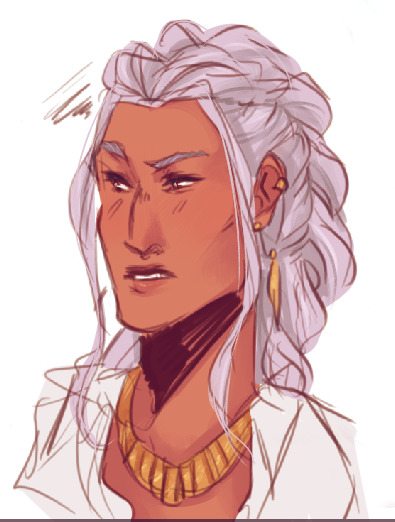
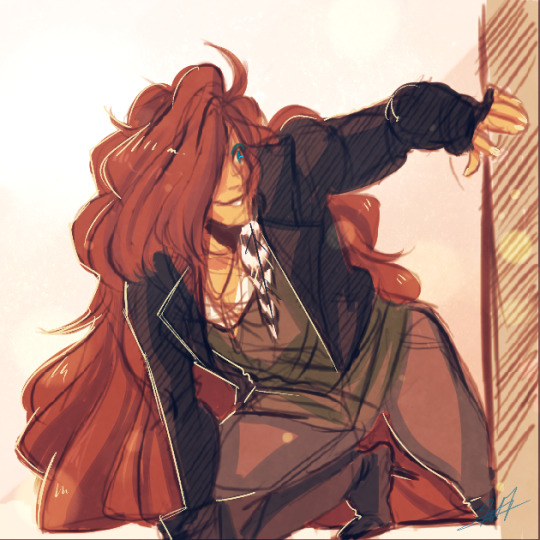
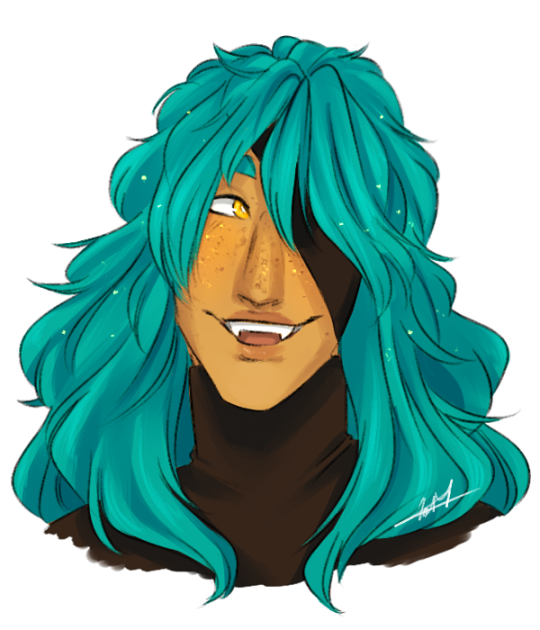
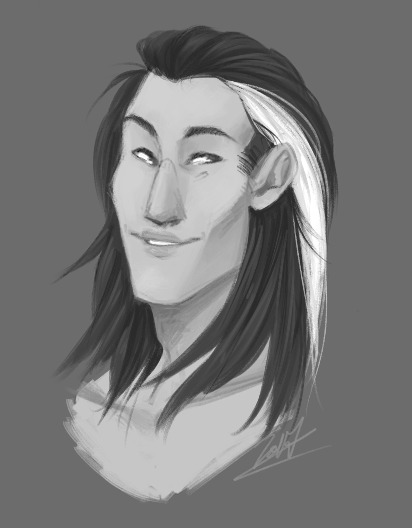

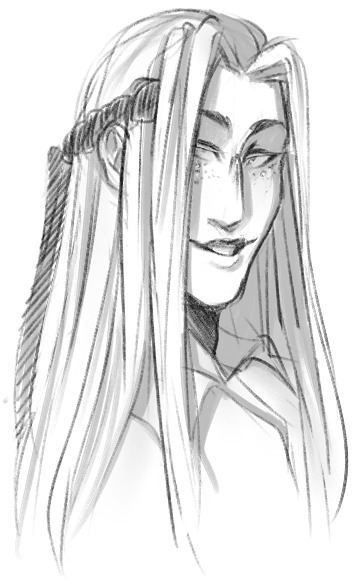
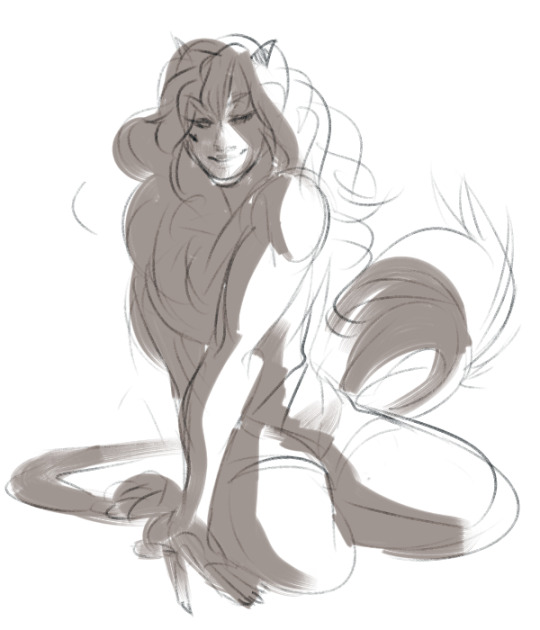

and heres a bunch of non-fanart stuff do not mind meee
34 notes
·
View notes
Text
Colorgender/Color Suffix Dump
Grouped by color/shades of color ~ Under the cut because it’s long ~ I made a few variations so you can choose what looks/sounds best to you ~ Hopefully I got all of these down now so I don’t have to make another post for Colorgender suffixes ~ all of these can apply to any variant of the color they’re related to (ex: maroonic can be for lighter maroon, darker maroon, etc.) ~ @pupyzu, I did a thing (and I’m sorry for it /lh)
Red
-dareddic: A suffix for genders related to dark red
-maroonic: A suffix for genders related to maroon
-lireddic: A suffix for genders related to light red
-pasreddic: A suffix for genders related to pastel red
-redic: A suffix for genders related to red
-reddic: A suffix for genders related to red
-rojic: A suffix for genders related to red
-rougic: A suffix for genders related to red
-scarletic: A suffix for genders related to scarlet
Orange
-darorangic: A suffix for genders related to dark orange
-liorangic: A suffix for genders related to light orange
-orangic: A suffix for genders related to orange
-pasorangic: A suffix for genders related to pastel orange
Yellow
-dargoldic: A suffix for genders related to dark gold
-daryellic: A suffix for genders related to dark yellow
-goldaic: A suffix for genders related to gold
-ligoldic: A suffix for genders related to light gold
-liyellic: A suffix for genders related to light yellow
-pasgoldic: A suffix for genders related to pastel gold
-pasyellic: A suffix for genders related to pastel yellow
-yellic: A suffix for genders related to yellow
-yellowic: A suffix for genders related to yellow
Green
-dargreenic: A suffix for genders related to dark green
-darverdic: A suffix for genders related to dark green
-greenic: A suffix for genders related to green
-ligreenic: A suffix for genders related to light green
-liverdic: A suffix for genders related to light green
-pasgreenic: A suffix for genders related to pastel green
-seafoamaic: A suffix for genders related to sea foam green
-seagreenic: A suffix for genders related to sea green
-verdic: A suffix for genders related to green
Blue
-blauic: A suffix for genders related to blue
-blueic: A suffix for genders related to blue
-bluic: A suffix for genders related to blue
-cerulic: A suffix for genders related to cerulean
-darblueic: A suffix for genders related to dark blue
-darbluic: A suffix for genders related to dark blue
-liblueic: A suffix for genders related to light blue
-libluic: A suffix for genders related to light blue
-pasblueic: A suffix for genders related to pastel blue
-pasbluic: A suffix for genders related to pastel blue
-navyic: A suffix for genders related to navy (the color)
-skyblueic: A suffix for genders related to sky blue
-skybluic: A suffix for genders related to sky blue
Purple
-darpuric: A suffix for genders related to dark purple
-darviolic: A suffix for genders related to dark violet
-hanic: A suffix for genders related to han purple
-hannic: A suffix for genders related to han purple
-heatheric: A suffix for genders related to heather (the color)
-lipuric: A suffix for genders related to light purple
-liviolic: A suffix for genders related to light violet
-paspuric: A suffix for genders related to pastel purple
-puric: A suffix for genders related to purple
-purpleic: A suffix for genders related to purple
-redviolic: A suffix for genders related to red violet
-violic: A suffix for genders related to violet (the color)
Pink
-blushaic: A suffix for genders related to blush (the color)
-darpinkic: A suffix for genders related to dark pink
-hotpinkic: A suffix for genders related to hot pink
-lipinkic: A suffix for genders related to light pink
-paspinkic: A suffix for genders related to pastel pink
-pinkic: A suffix for genders related to pink
Brown
-beigic: A suffix for genders related to beige
-brownic: A suffix for genders related to brown
-darbrownic: A suffix for genders related to dark brown
-librownic: A suffix for genders related to light brown
-sepiaic: A suffix for genders related to sepia
-tanic: A suffix for genders related to tan
-tannic: A suffix for genders related to tan
B&W Scale (black, white, grays)
-albic: A suffix for genders related to white
-dargrayic: A suffix for genders related to dark gray/grey
-dargreyic: A suffix for genders related to dark gray/grey
-grayic: A suffix for genders related to gray/grey
-greyic: A suffix for genders related to gray/grey
-ligrayic: A suffix for genders related to light gray/grey
-ligreyic: A suffix for genders related to light gray/grey
-noiraic: A suffix for genders related to black
Unsorted
(either colors that can fit multiple categories or things that are “kinds” of colors, pale colors, dark colors, etc.)
-darcolic: A suffix for genders related to dark colors or one or more dark colors
-darindic: A suffix for genders related to dark indigo
-darmagentic: A suffix for genders related to dark magenta
-dartealic: A suffix for genders related to dark teal
-fuchsic: A suffix for genders related to fuchsia
-indic: A suffix for genders related to indigo (the color)
-licolic: A suffix for genders related to light colors or one or more light colors
-lifuchsic: A suffix for genders related to light fuchsia
-lighindic: A suffix for genders related to light indigo
-limagentic: A suffix for genders related to light magenta
-litealic: A suffix for genders related to light teal
-magentic: A suffix for genders related to magenta
-palecolic: A suffix for genders related to pale colors or one or more pale colors
-pastelic: A suffix for genders related to pastel colors or one or more pastel colors
-tealic: A suffix for genders related to teal
#colorgender#suffix#redgender#orangegender#yellowgender#greengender#bluegender#purplegender#whitegender#blackgender
76 notes
·
View notes
Text
morosiss
jaayus
albicants
tahcenda
gumusscrvi
4 notes
·
View notes
Text

Batgirl Adventures
by Paul Dini; Rick Burchett;Rick Taylor and Albic DeGuzman
DC
#dc cómics#batgirl adventures#rick burchett#rick taylor#paul dini#haley quinn#barbara gordon#batgirl
16 notes
·
View notes
Text
when getting the idea: hey maybe I could target this one at younger audiences
when planning: and of course being assaulted by a crowd of furious citizens does NOT help her work through the ongoing trauma caused by her new parental figure pressuring her into committing actual war crimes, and her idea of self-worth plummets to the point where she tries to goad her former-best-friend-turned-enemy into killing her in battle because she believes that will be better for everyone and-
1 note
·
View note
Text
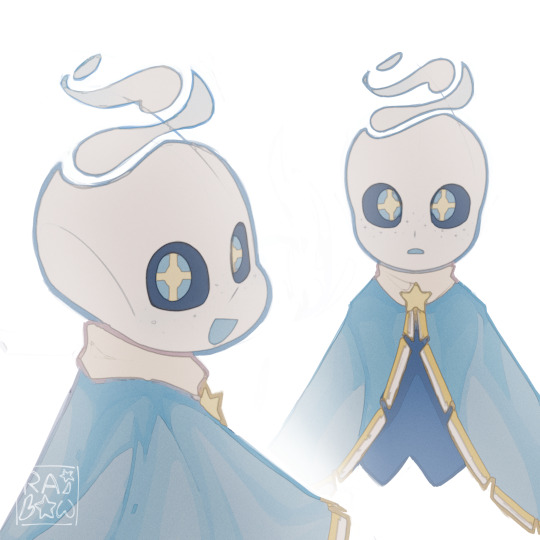
Whisp :3
I honestly love whisp so much then i saw that he has a scythe and i do have to say that i am intensly hyperfixated on scythes
Whisp belongs to @/allbically on instagram, Albically on TikTok!!
#undertale au#undertale#sans#sans undertale#idk#art#whisp#whisp sans#sans au#au sans#undertale sans#utmv#utau#au#undertale alternate universe
57 notes
·
View notes
Text
About
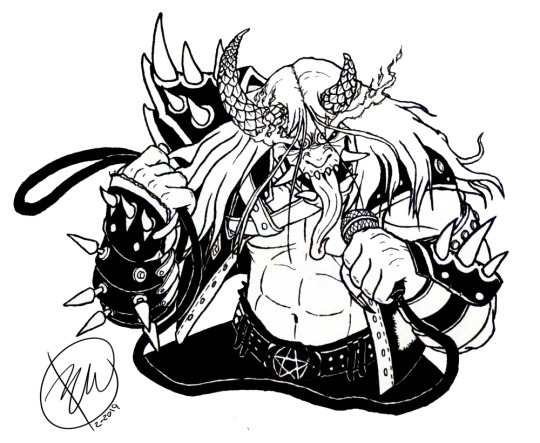
Discription
Brudish is your typical badass monster born from the bowls of hell and scum itself, crawling out of the deepest darkest deaths of insanity to yada blah blah yeaaah right. To sum it up, Koji is a well off brat coming from a fairly wealthy burrow somewhere in the mountains, one day Koji decided he had enough of his families traditional oni lifestyle and to add insult he Couldn’t care less for all its formalities thus he left home to pursue his career in metal! screw those losers, never belived in him anyway… (accept they were actually extremely supportive)
Taking part in many short lived bands a cross the lands, I say so many due to him being kicked out of so many for lack of better word. His brutish’ness…
Character discription
Name - Nickname - Brudish (real name - Koji Albic)
Height - 6’5
Age - 25 (demons technical age 125)
Eye color - Black with white pupils
Personality
Obnoxious and fairly stupid, has a tendency to rip people in half while preforming… A sort of “I’m the moment” thing, he always says sorry after if that counts? Lazy and rude with a massive soft spot for kiddos.
Abilities
None really besides having the streagth of a regular Oni? Can shred the guitar like a, well ya know, Demon. Not to mention his killer shriek that can kick off any live performance.
2 notes
·
View notes
Text

morgana as an entity, or morgan of the faye, is linked heavily to the goddess matrona of celtic mythology, and also to a goddess specifically known for the ulster cycle as of her involvement in la morte de arthur, written in 1470. while i will have a much, much longer headcanon dealing with her link to matrona, especially being that the same deity was linked to be a protector of modron, or mordred.... i specifically wanted to talk about her similarities with the another goddess of irish mythology known as the morrigan. the goddess is more of a primordial force than a ‘god’ by conventional means, and is known more by her moniker ‘the phantom queen’. while she is linked heavily to the outcome of battle and bloody war, rather than being wholly associated with the actual fighting of a battle, she has more to do with the fate of those in and after a clash and the gruesome deaths that follow. but instead of acting as a means to transport someone to the afterlife, they were simply a symbol of death on the battlefield to some lesser extend.
A huge part of the Tuatha de Danann, the Morrigan was also known to have been made up of three distinct goddesses known mostly today as the maiden, the mother and the crone. All of which have a link to Morgana in one of the many stages of her life and to goddesses such as Ceredwen,
The morrigan would often appear in the form of a black crow, which happens to be morgana’s symbolic familiar, and upon seeing one on the battlefield it was believed to mean that death would befall that person imminently. this aspect of the morrigan made her popular for worship by those going into battle. interestingly, in most forms of media that portray morgana, this also links to her being used as an instrument of war, offering her services to the queens and kings of the north in exchange for shelter and safety, or for troops to fight of camelot and the rest of growing mercia.
but the morrigan also has in-depth protective qualities that enable her to protect her people. namely those who were worshipers of these ancestral gods and practitioners of magic, which also directly aligns with morgana’s personal interests. morgana le faye was a symbol to most practitioners of witchcraft and druidism of this time as a pariah that fought against the Anglicization of what would become albion. remember that at the time of her life (presumed to be around the timeperiods of 400-600 ad, respectively) it was when the heavy Catholicisation of what is now great britain, had begun. uther pendragon, and later the knights of the round, had pushed those that they had deemed uncivilized (magic-users) into areas in and north/west of lothian, gaelic and pictish lands.
BECAUSE OF THIS, TOO, morgana can be seen as a protector of those who were like her, especially if we bring popular canon such as bbc’s merlin into view, which i take some inspiration from in terms of magic being ‘outlawed’ at the time through penalty of death. fighting against the oppression of pagan ritualistic practitioners all over briton, as well as the druids of the dal riata alike, she was turned into a martyr of sorts and later demonized to the point of gaining a status of ‘evil’ ... while the kings who had oppressed or slaughtered these people (particularly the druids, like uther pendragon or his son in historic canon, not in the case of bbc) were instead built of as heroes to the people of albion for ridding them of the ‘evil’ pagans that had previously (as termed by uther) ‘infested’ their lands. propoganda against them surmounted and the britons and anglo-saxons continued their territory war, until separately the battle of camlann occured [ where king arthur had lead his knights of the round table into a war that would have claimed most of the northern territory in the name of camelot against the anglo-saxons, which had currently belonged to several albic tribes including that which belonged at the time to his nephew, gwaine of loth. ]
almost ironically, this battle is what enabled the bernicians to take even more land for themselves, creating the kingdom of deira (which, in my canon is what pushed morgana even further north of lothian, into the lands of the gaels). the reason i bring up this battle is because the morrigan is famous for taking part in the battle against the fomorians. the morrigan did naught at first but speak in chant, which caused the fomorians to scatter in fear until they fell into the seas.
another story she is involved in is that of Cú Chulainn, who threatens the morrigan when she releases his cattle back into the wild, only to realize who he has angered and explain his misdeed. when the morrigan prophecies ill-tidings for him on behalf of his threat, he tells her that she has no power over him. as we would expect, Cú Chulainn is given numerous chances to mend the relationship with the morrigan and botches it every time, eventually leading him to his inevitable death with the morrigan, as a crow, standing atop his dead body as a means to confirm his death. interestingly, morgana was also present at the battle of camlann, which i mentioned earlier, when both her nephew and her half-brother (mordred and king arthur) were slain by a single blow from one another’s enchanted blades.
so why bring up the morrigan at all? in my canon/headcanon, morgana didn’t just receive simple ‘fae’ powers from becoming the high priestess of avalon. i believe she drank from the proverbial spring itself when there was nothing more to learn from merlin and nimue and was granted similar powers to the three major goddesses, including the ability to dictate fate - albeit with a price she was not ready to pay. morgana in general is almost always seen as both a victim and chooser of fate, so i felt this was a very nice way to tie these figures together.
15 notes
·
View notes